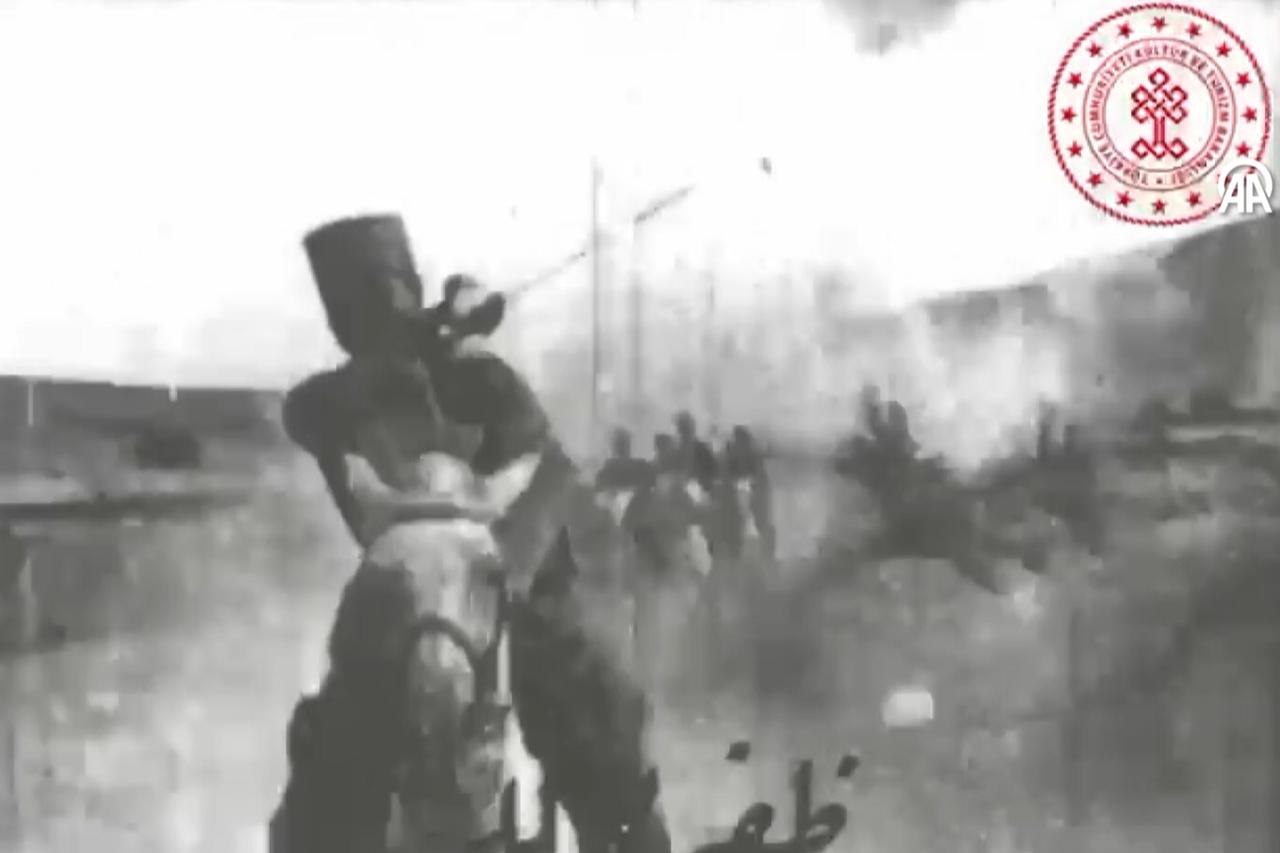
Minister of Culture and Tourism Mehmet Nuri Ersoy announced that footage from the long-thought-lost 1923 film "Zafer Yollarinda" ("On the Roads of Victory") has been rediscovered.
The discovery was made during extensive archival work by the General Directorate of Cinema, shedding new light on one of the earliest films of the Turkish Republic.
For many years, it was widely assumed that "Zafer Yollarinda" was directed by Fuat Uzkinay, a pioneering figure in Turkish cinema.
However, detailed analysis of the rediscovered footage and archival records has revealed that the actual director was Muhsin Ertugrul, one of the most influential figures in the history of Turkish theater and cinema.
"Zafer Yollarinda" holds a unique place in Turkish cinematic history as the first known historical reenactment film.
The production dramatizes the heroic operations of the 5th Cavalry Corps under the command of General Fahrettin Altay during the Great Offensive, culminating in the defeat of Greek forces and the liberation of western Anatolia.
Fahrettin Altay himself appears in the film, portraying his own role and adding authenticity to the cinematic depiction of these pivotal events.
The film preserves its original Ottoman Turkish intertitles and credits, offering a rare insight into the storytelling, visual style, and technical approach of Turkish filmmakers during the Republic’s formative years.
Minister Ersoy highlighted the importance of protecting, restoring, and digitizing such cinematic treasures.
"This film is not just a work of art; it is a vital piece of our collective memory," Ersoy said.
He praised the General Directorate of Cinema for its meticulous archival work, which brought this cultural artifact back into public awareness.
The rediscovery reinforces the importance of preserving historical films as a way to connect contemporary audiences with Türkiye’s foundational history.
Following the discovery, the Ministry of Culture and Tourism has announced plans to restore and digitally archive "Zafer Yollarinda," making it accessible to researchers, students and the public.
The restoration process aims to maintain the film’s original aesthetic, including its intertitles and period-specific cinematography, while ensuring that future generations can study and appreciate this pioneering work in Turkish cinema.